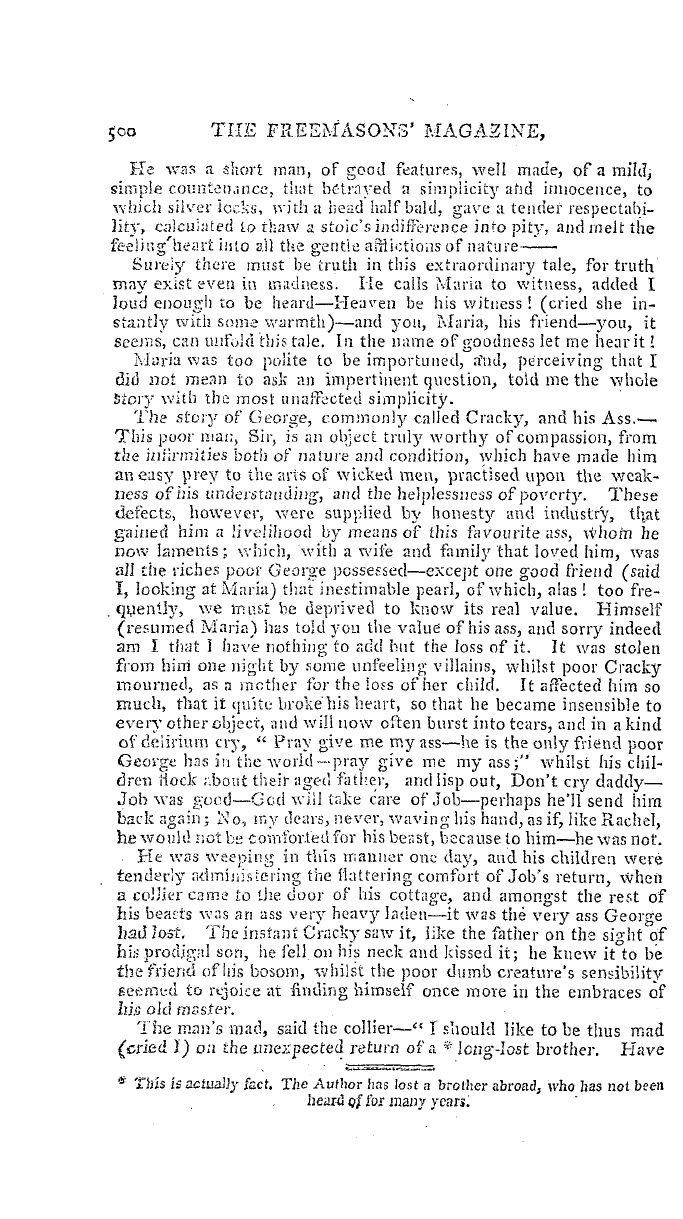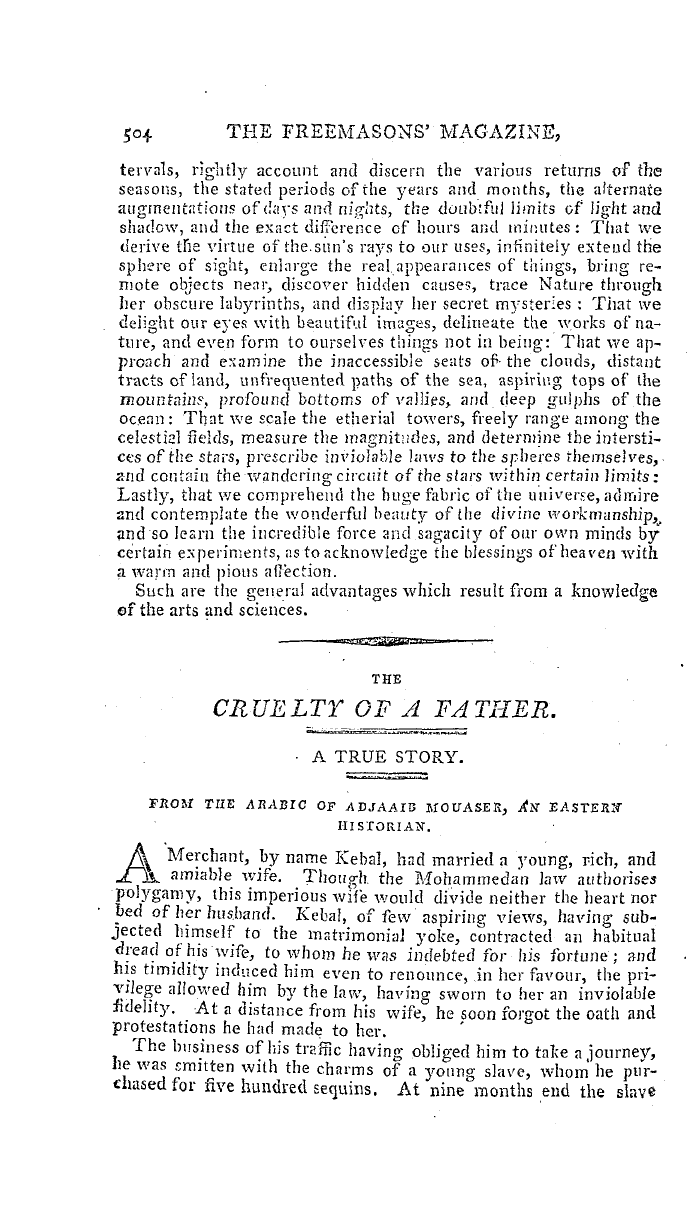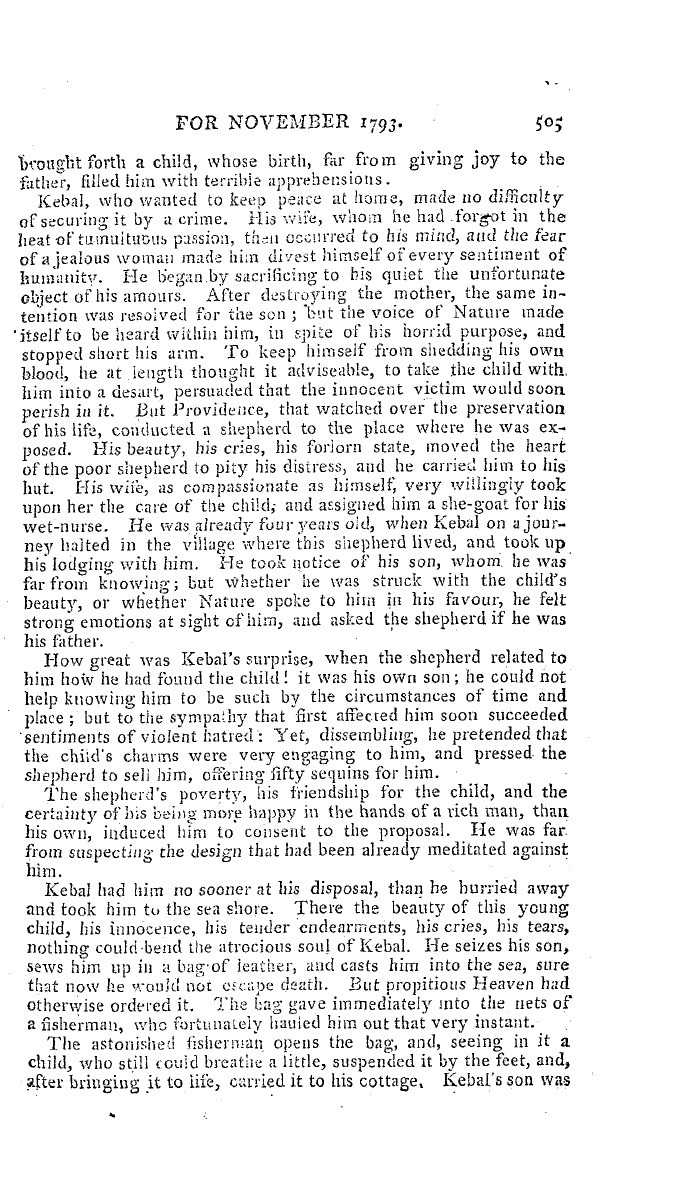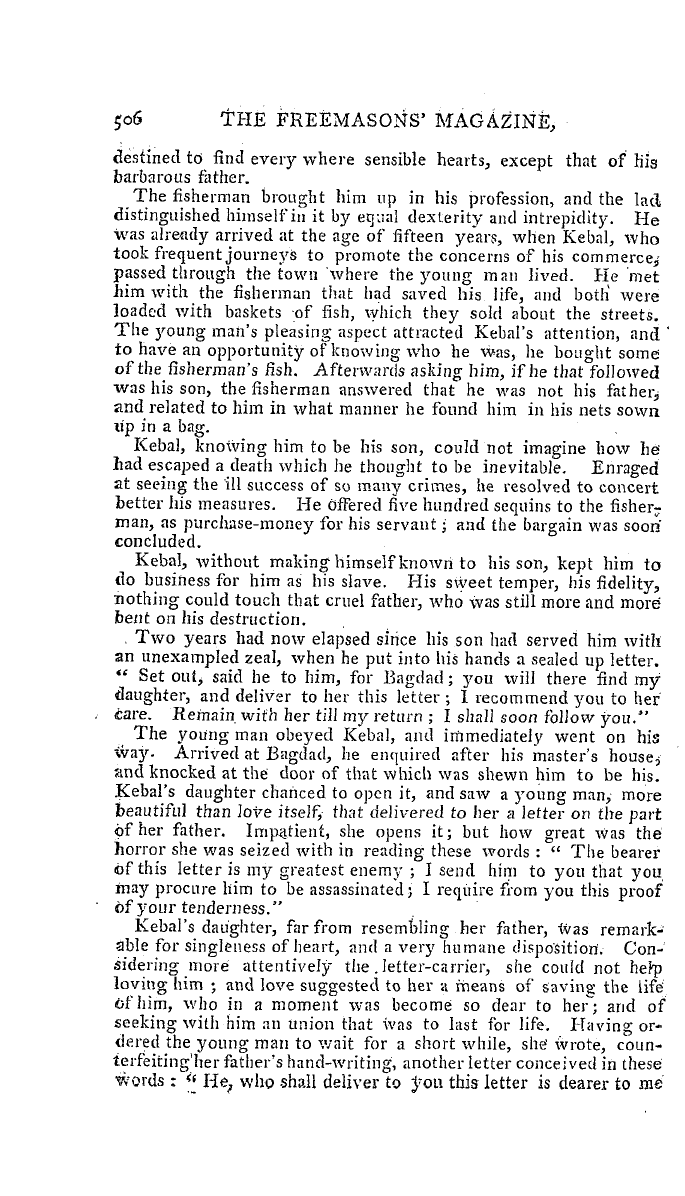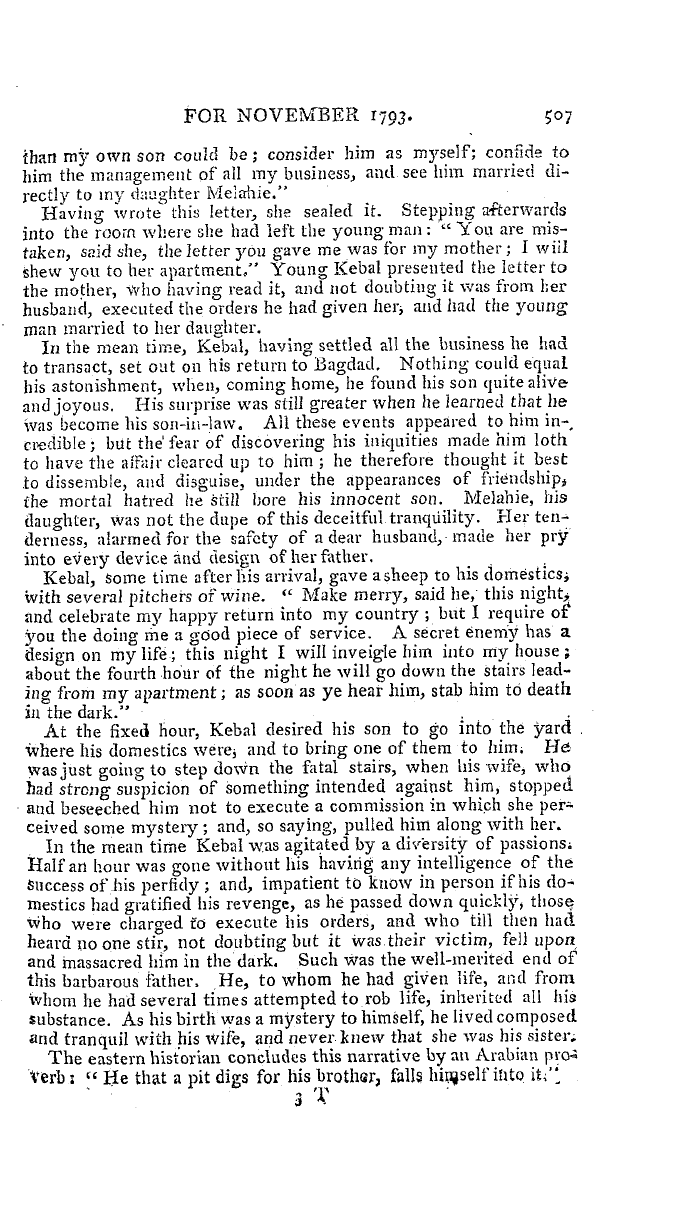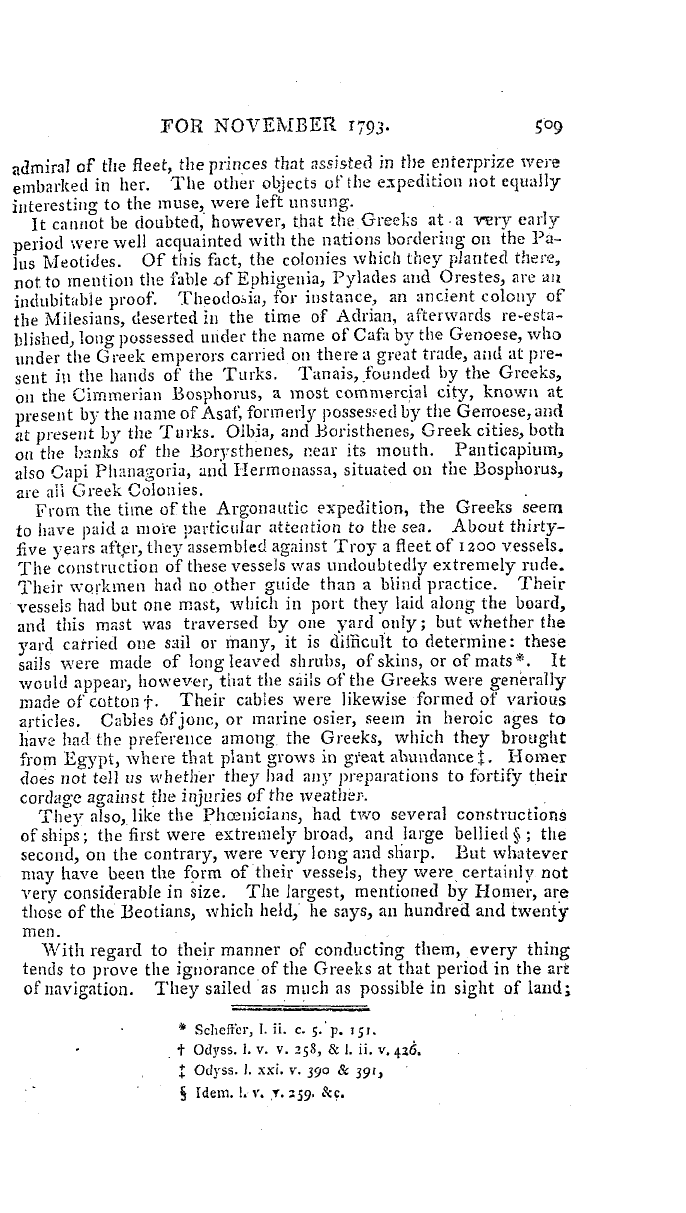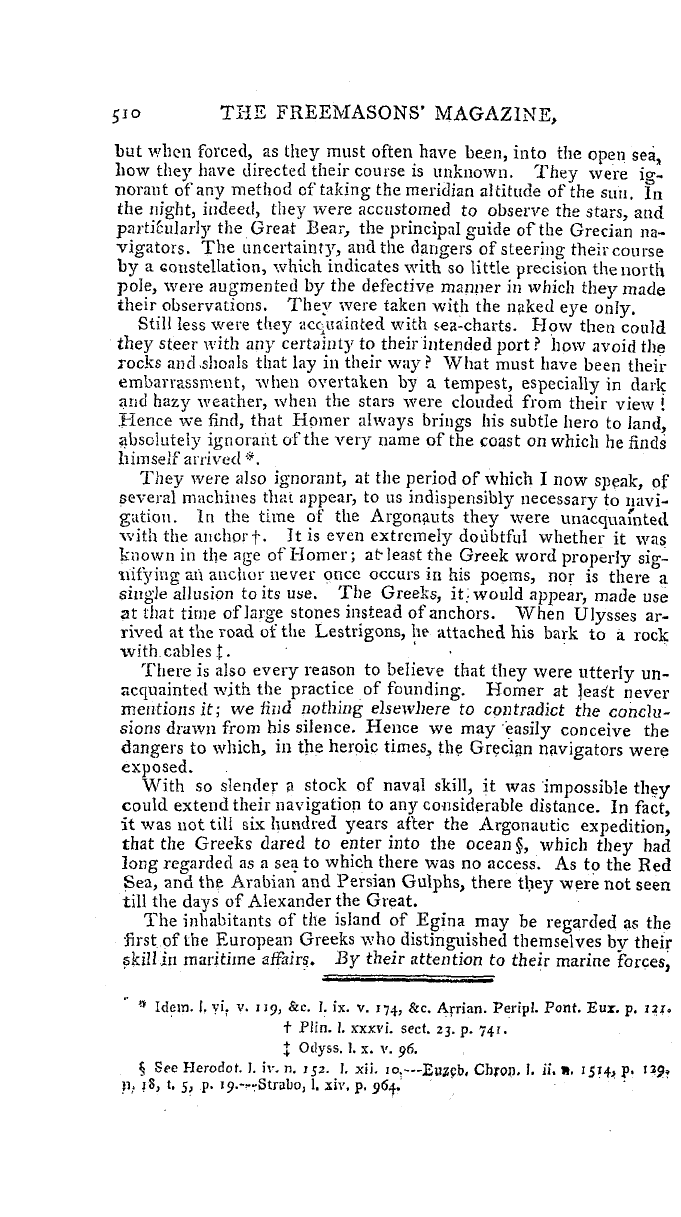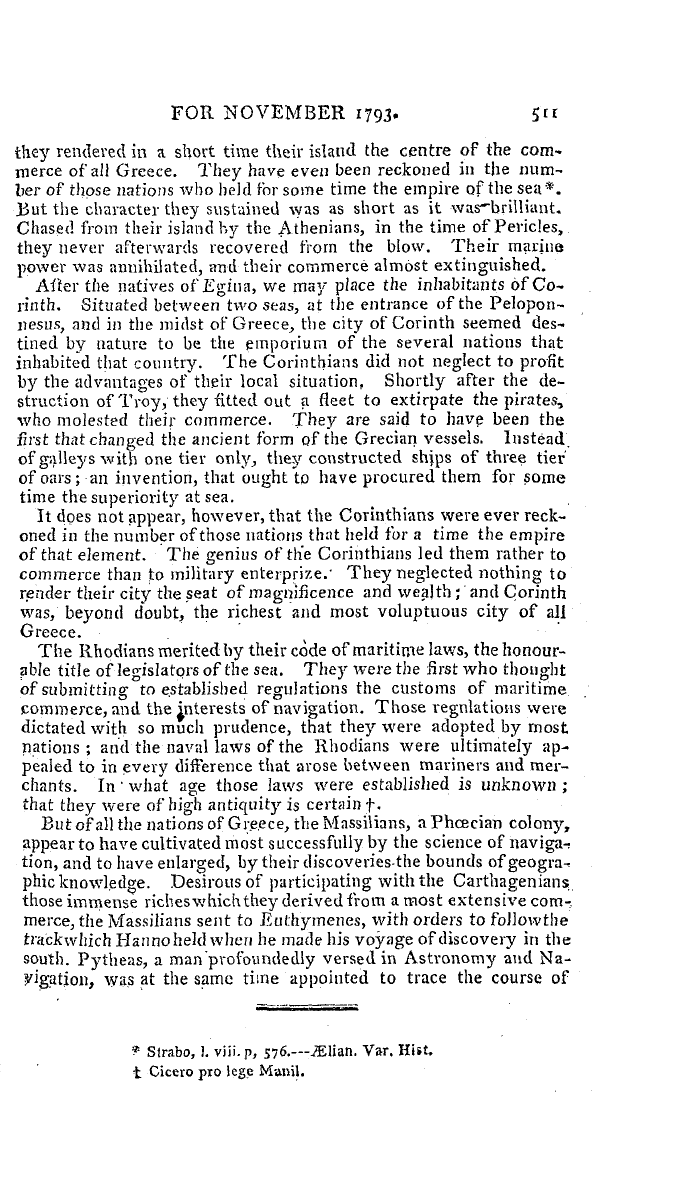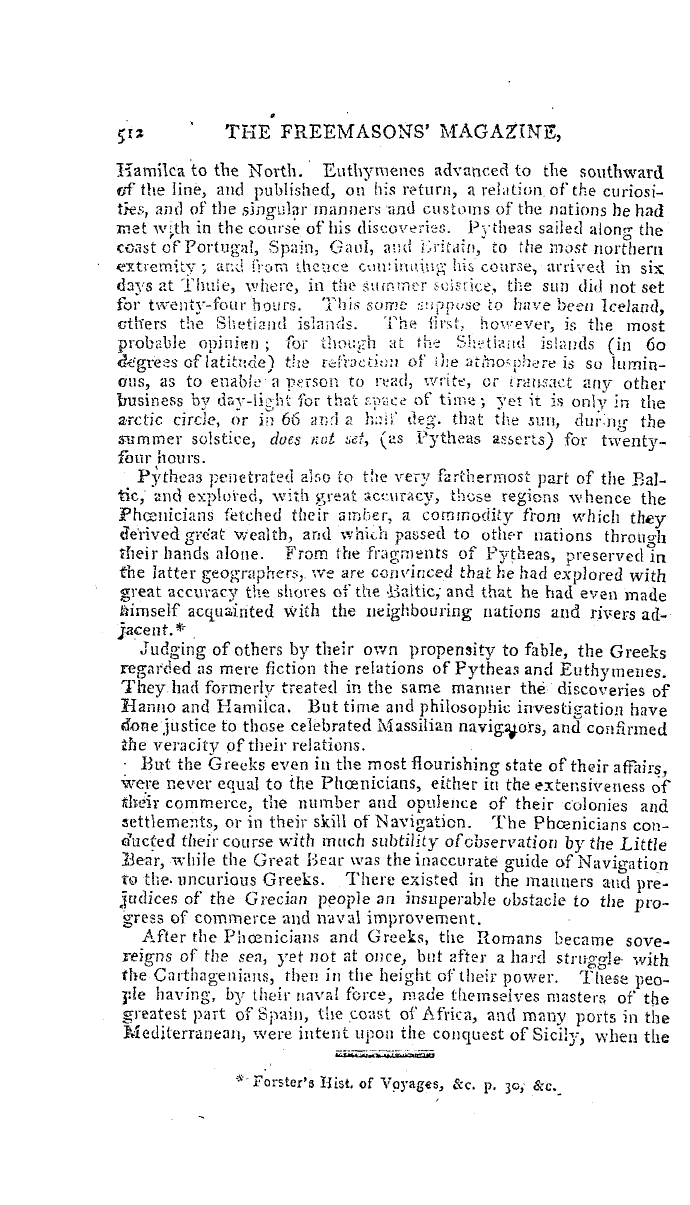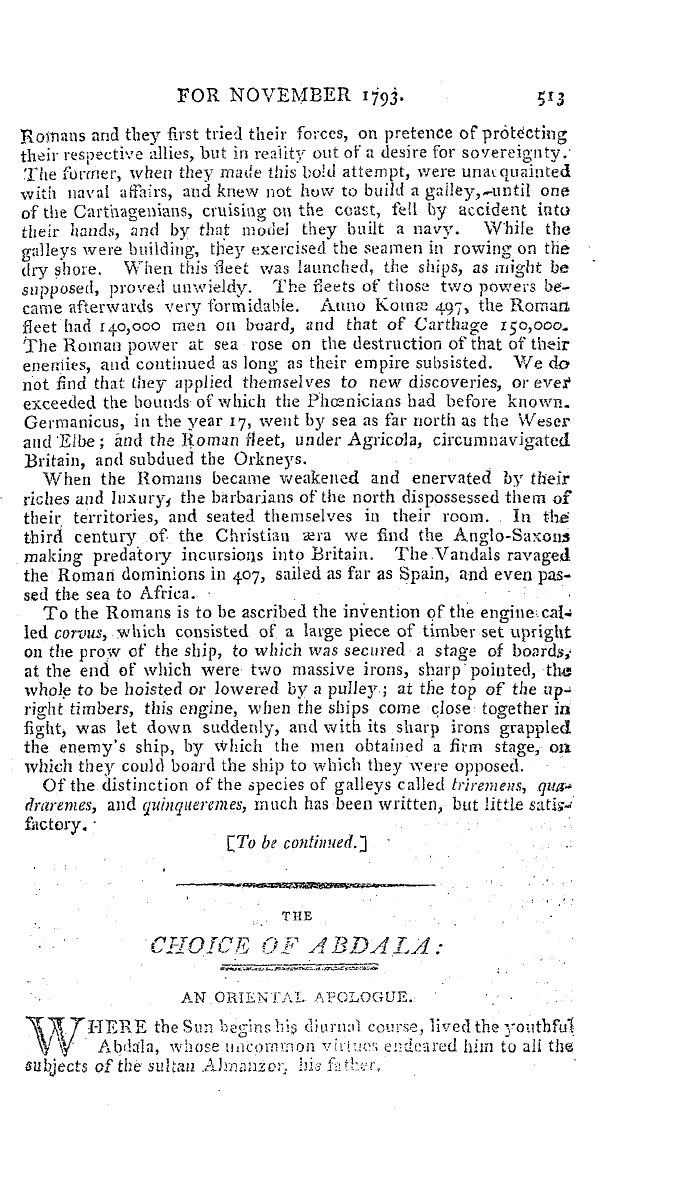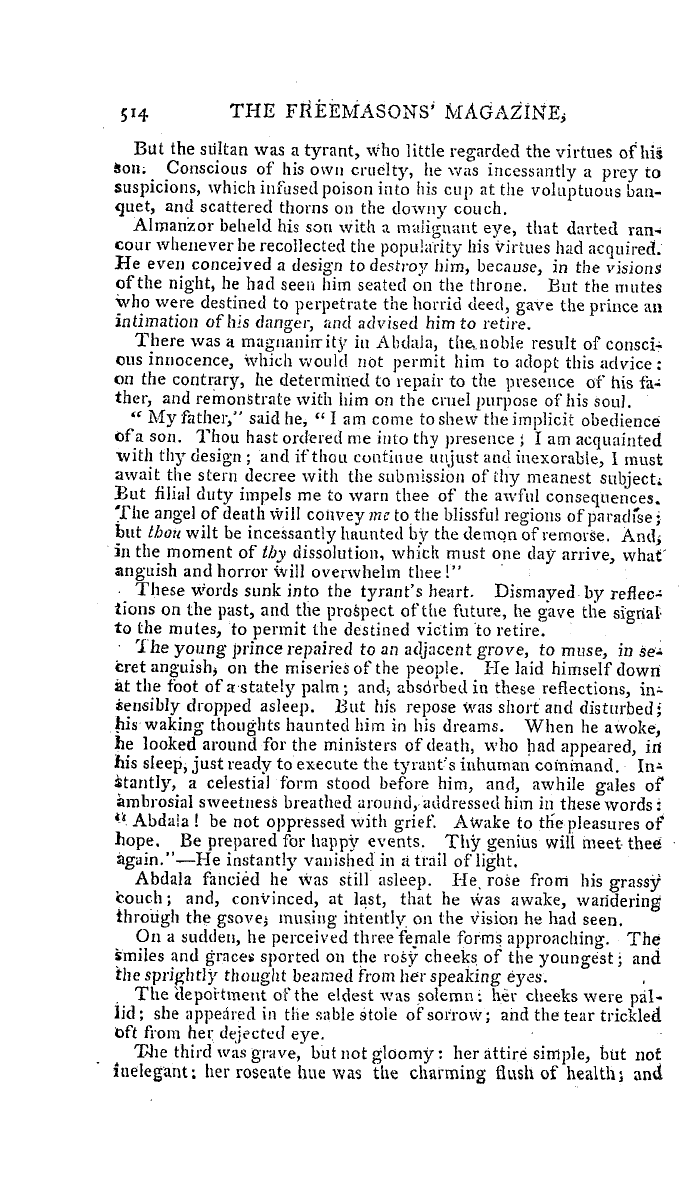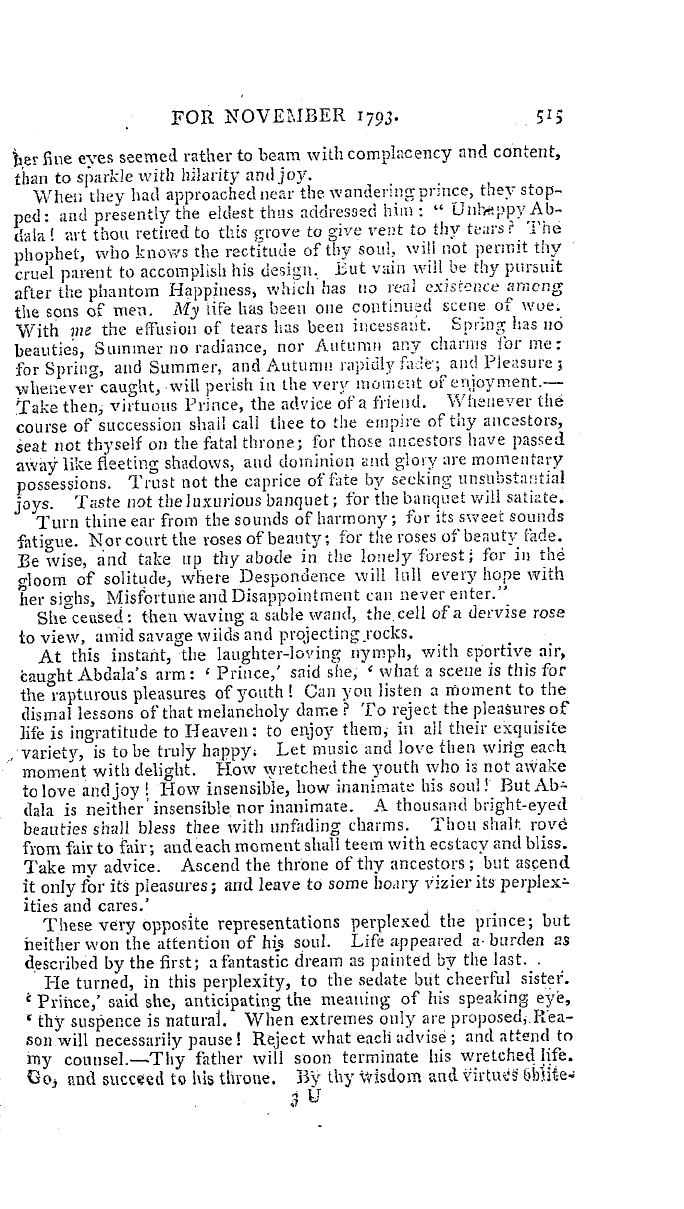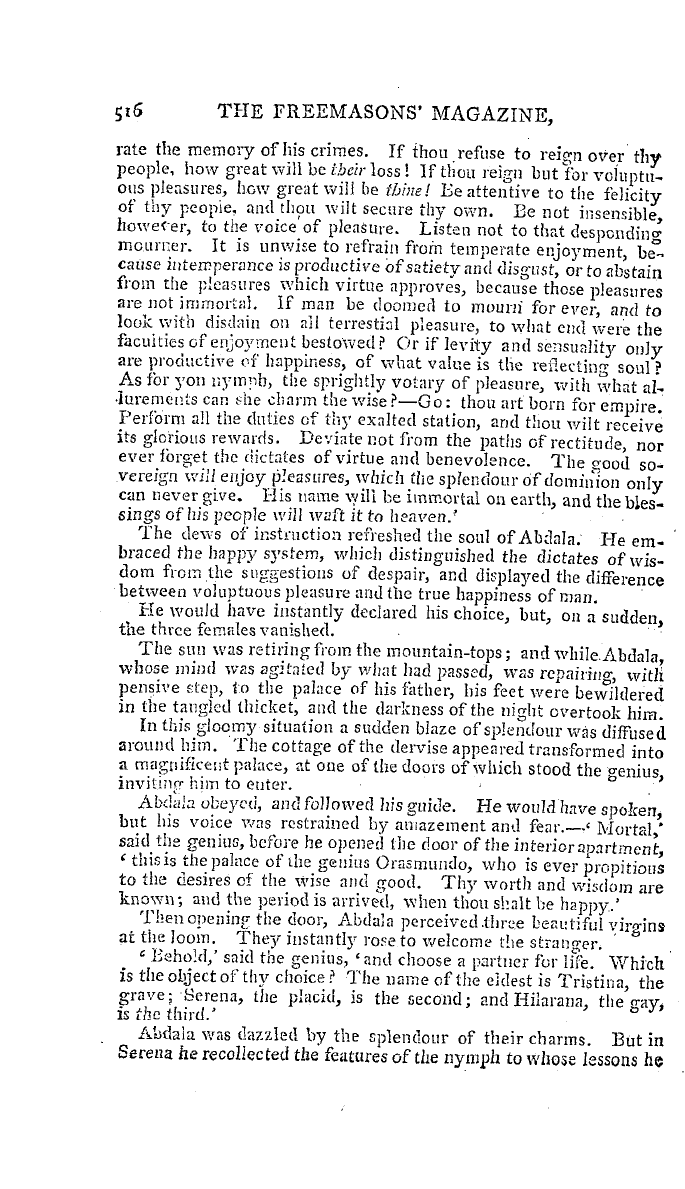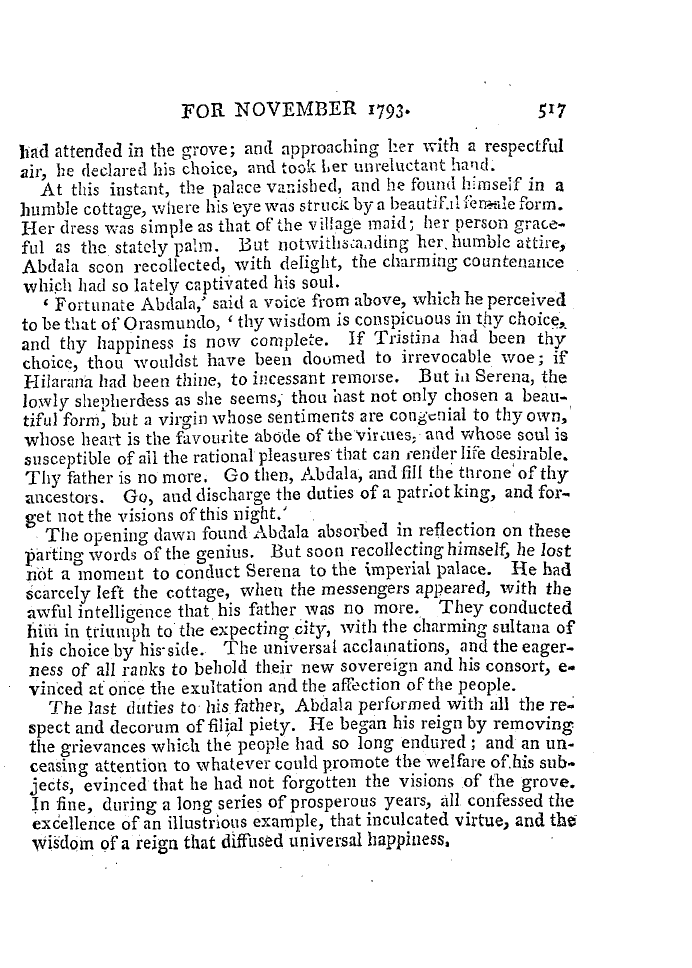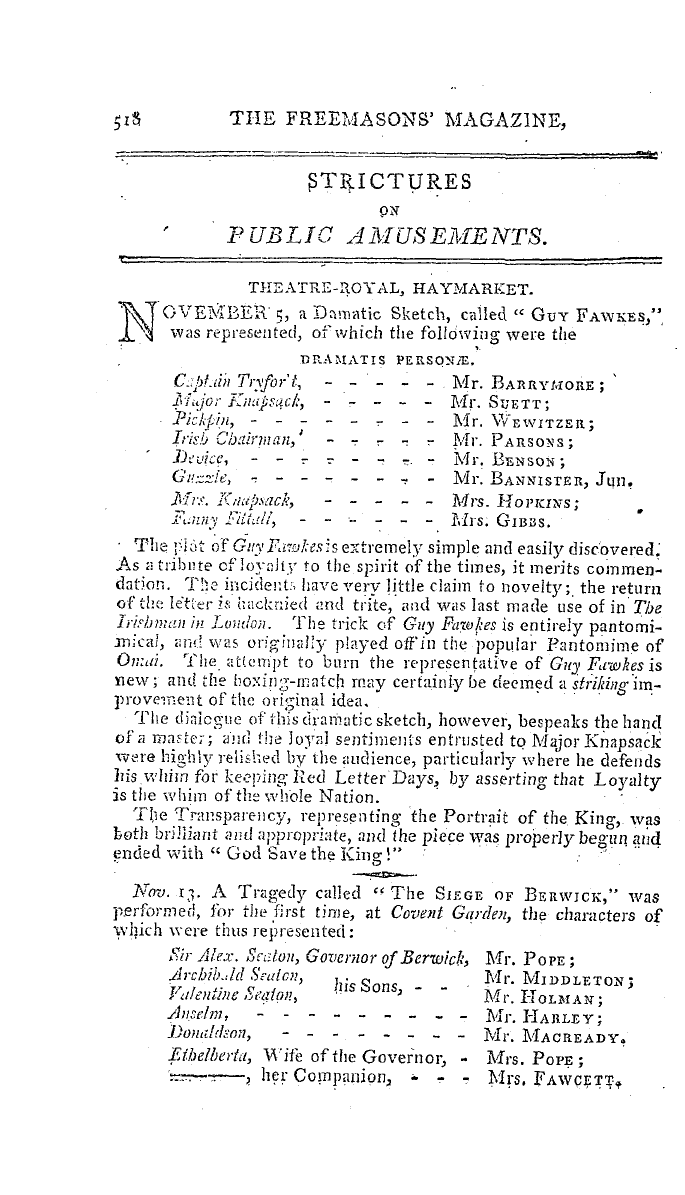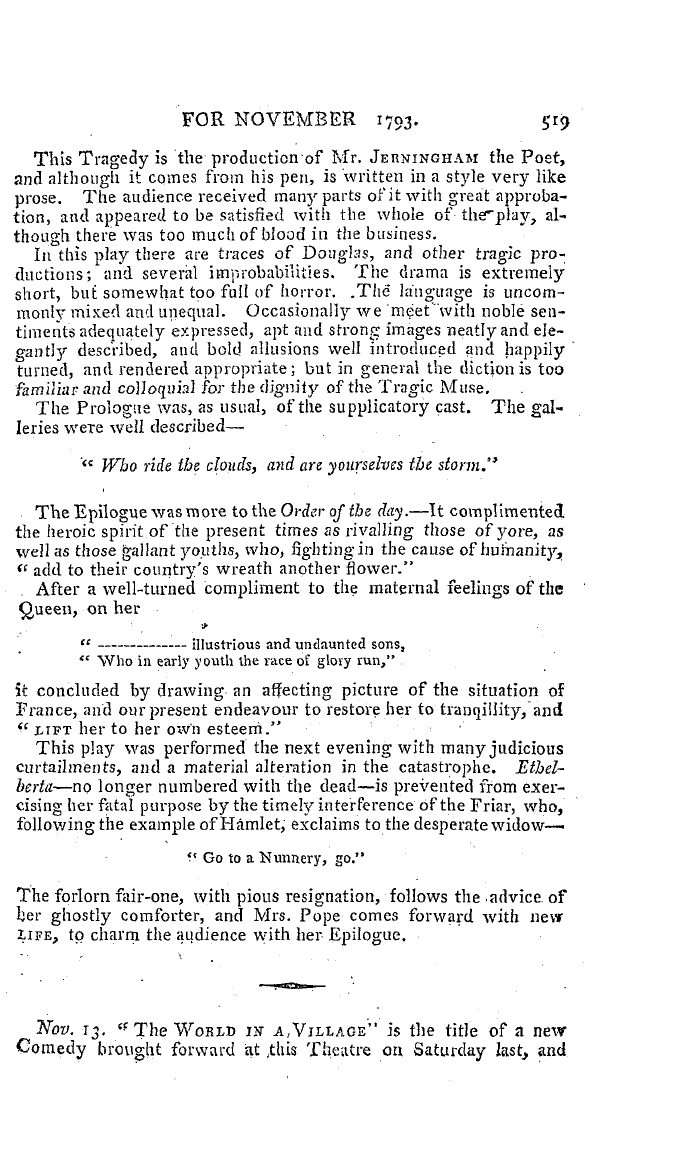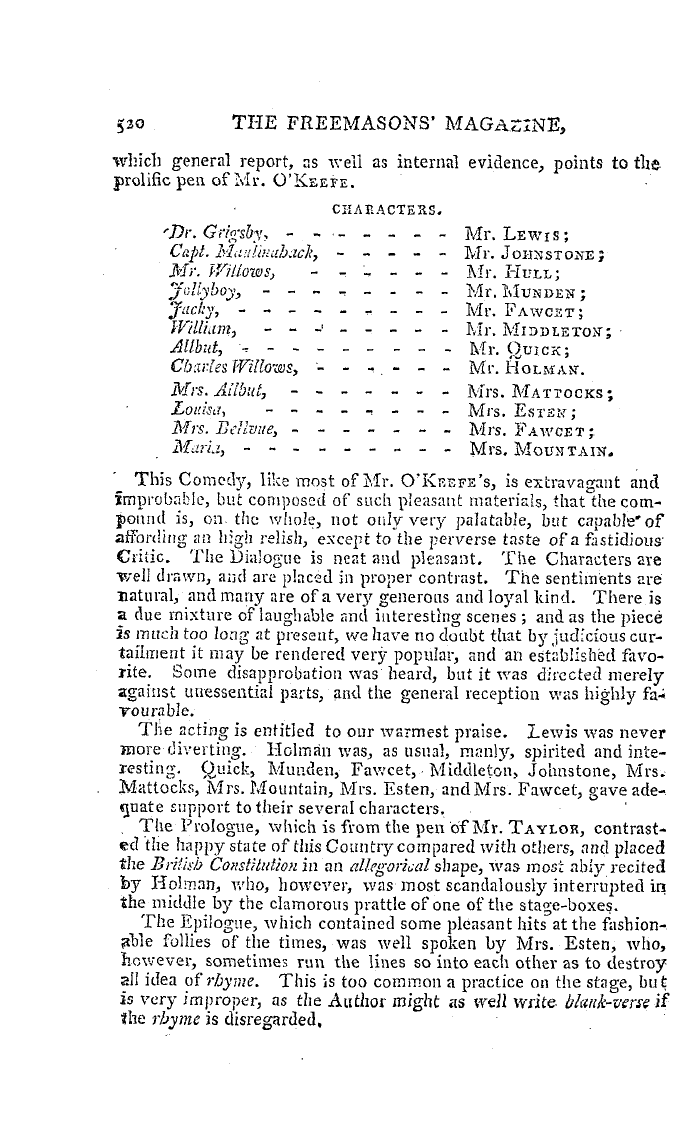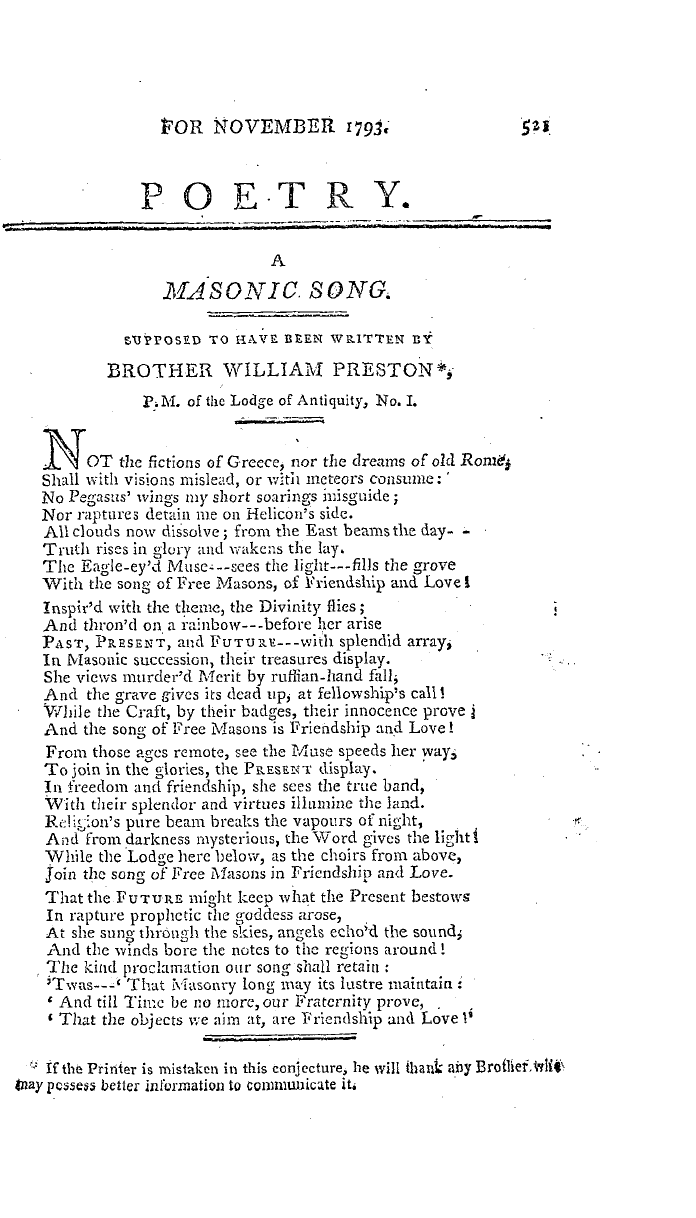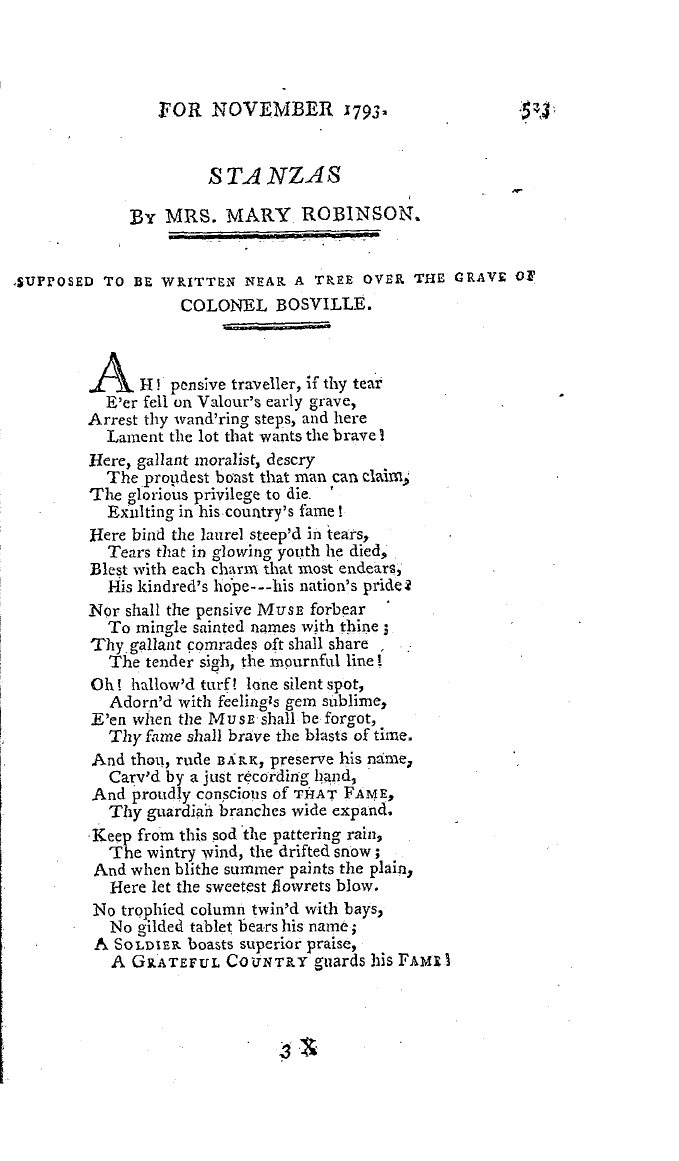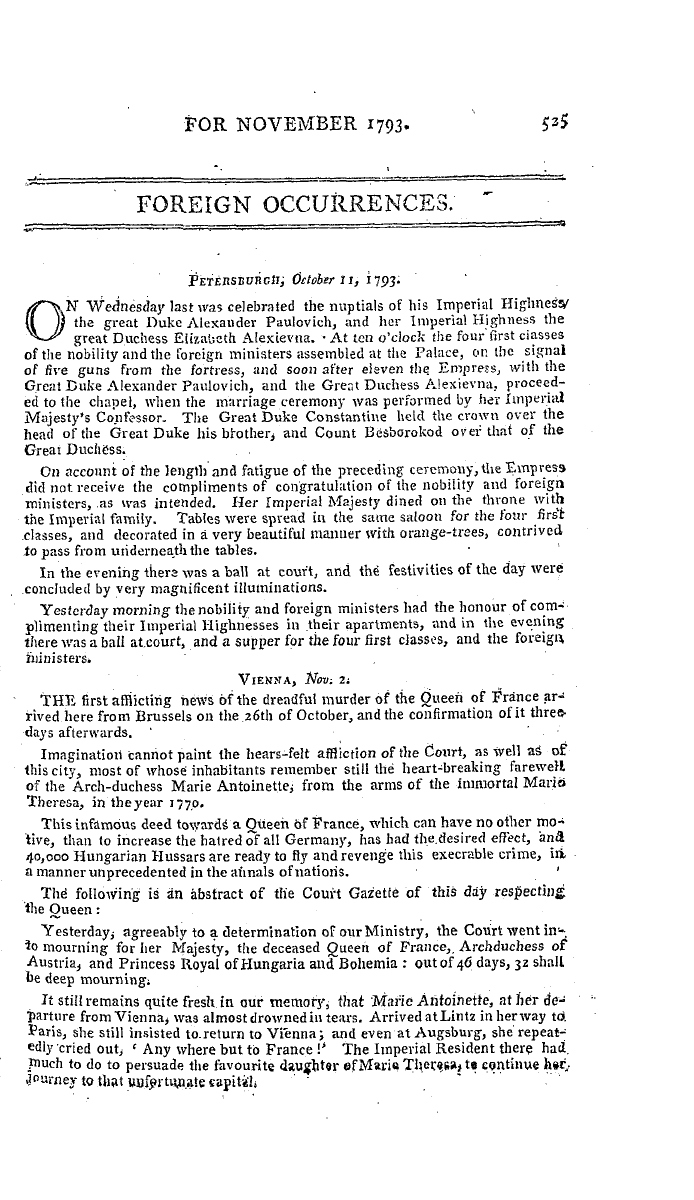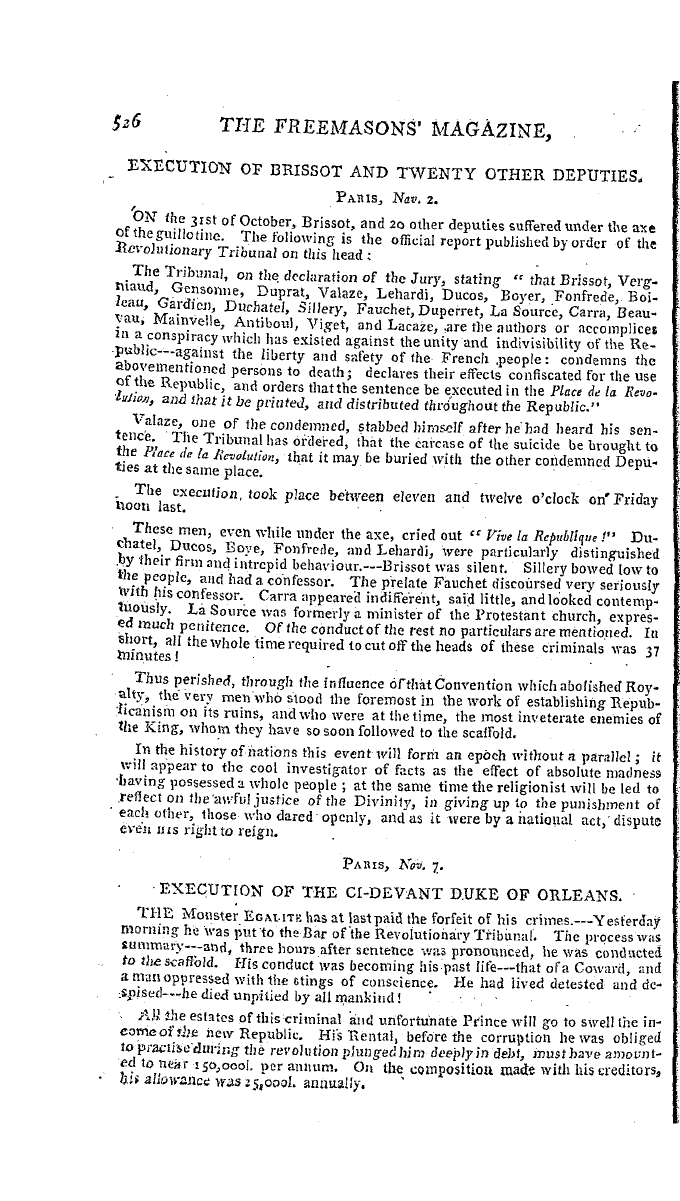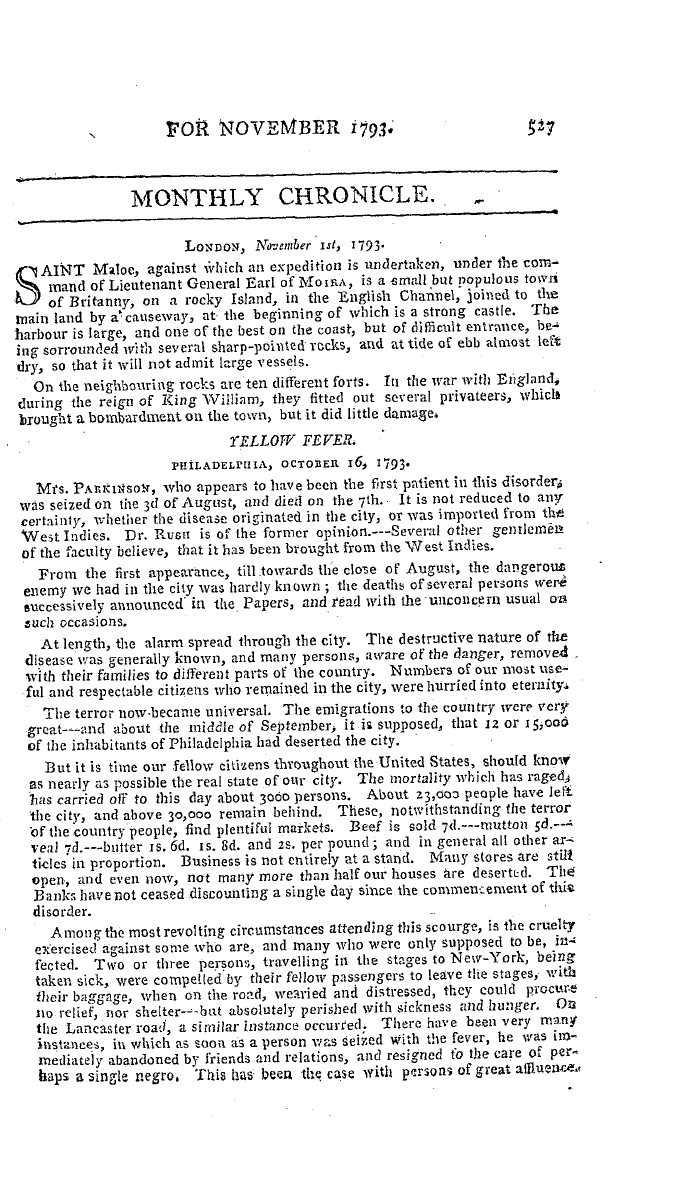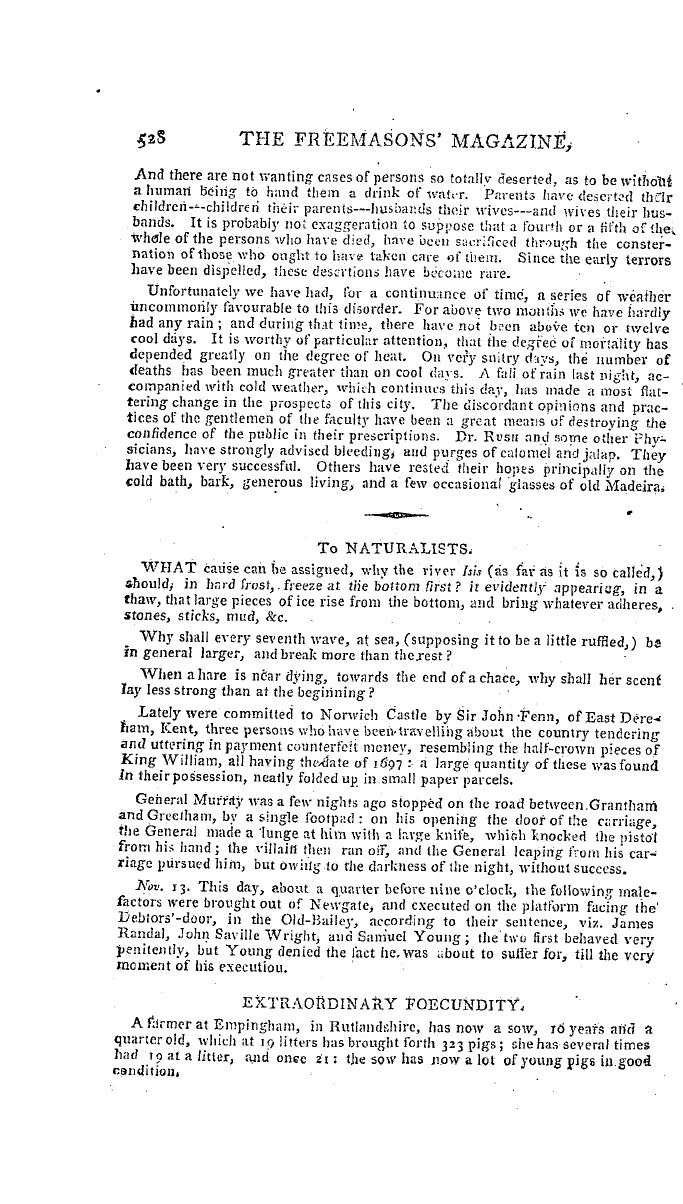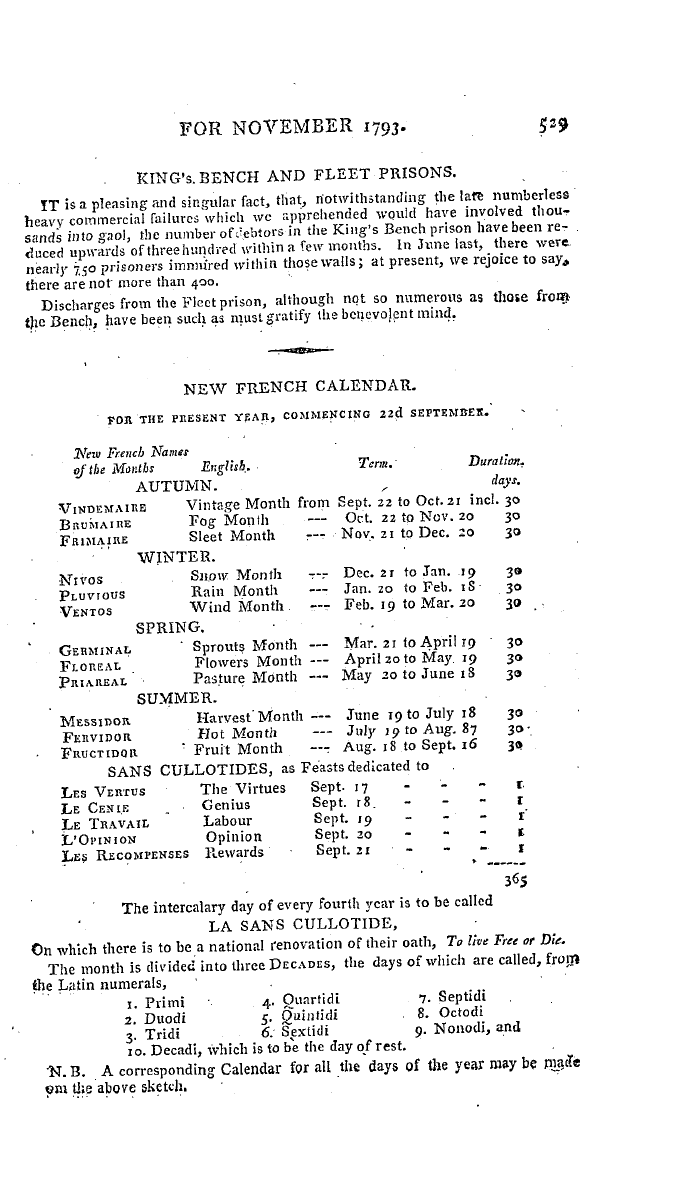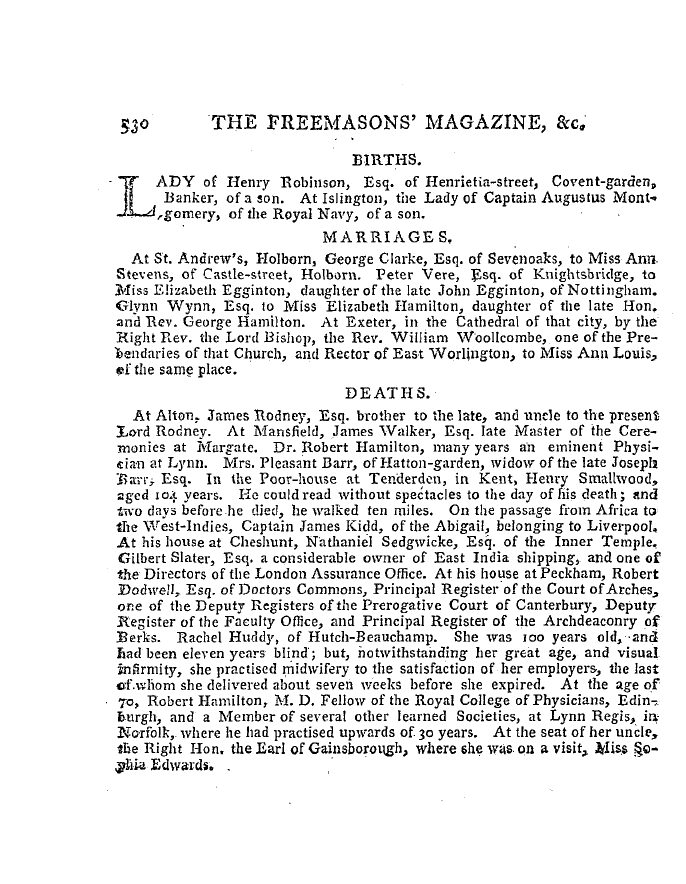-
Articles/Ads
Article A VIEW OF THE PROGRESS OF NAVIGATION. ← Page 2 of 6 →
Note: This text has been automatically extracted via Optical Character Recognition (OCR) software.
A View Of The Progress Of Navigation.
admiral of the fleet , the princes that assisted in the enterpnze were embarked in her . The other objects of the expedition not equally interesting to the muse , were left unsung . It cannot be doubted , ' however , that the Greeks at-a very early period were well acquainted with the nations bordering on the Pains Meotides . Of this fact , the colonies which they planted there , not to mention the fable of EhigeniaPlades and Orestesare an
p , y , indubitable proof . Theodosia , for instance , an ancient colony of the Milesians , deserted in the time of Adrian , afterwards re-established , long possessed under the name of Cafa by the Genoese , who under the Greek emperors carried on there a great trade , and at present in the hands of the Turks . Tanais , founded by the Greeks , on the Cimmerian Bosphorus , a most commercial city , known at the and
present by the name of Asaf , formerly possessed by Genoese , at present by the Turks . Oibia , and Boristhenes , Greek cities , both on the banks of the Borysthenes , near its mouth . Panticapium , also Capi Phanagoria , and Hermonassa , situated on the Bosphorus , are ail Greek Colonies . From the time of the Argonatttic expedition , the Greeks seem to have paid a more uarticular attention to the sea . About
thirtyfive years after , the } ' assembled against Troy a fleet of 1200 vessels . The construction of these vessels was undoubtedly extremely rude . Their workmen had no other guide than a blind practice . Their vessels had but one mast , which in port they laid along the board , and this mast was traversed by one yard only ; but whether the yard carried one sail or many , it is difficult to determine : these sails were made of long leaved shrubsof skinsor of mats * . It
, , would appear , however , that the sails of the Greeks were generallymade of cotton f . Their cables were likewise formed of various articles . Cables 6 f jonc , or marine osier , seem in heroic ages to have had the preference among , the Greeks , which they brought from Egypt , where that plant grows in great abundance % . Homer does not ' tell us whether they had any preparations to fortify their
cordage against the injuries of the weather-. The } r also , like the Phoenicians , had two several constructions of ships ; the first were extremely broad , and large bellied § ; the second , on the contrary , were very long and sharp . But whatever may have been the form of their vessels , they were certainly not very considerable in size . The largest , mentioned by Homer , are those of the Beotians , which held , he says , an hundred and twenty
men . With regard to their manner of conducting them , every thing tends to prove the ignorance of the Greeks at that period in the art of navigation . They sailed as much as possible in sight of land ;
Note: This text has been automatically extracted via Optical Character Recognition (OCR) software.
A View Of The Progress Of Navigation.
admiral of the fleet , the princes that assisted in the enterpnze were embarked in her . The other objects of the expedition not equally interesting to the muse , were left unsung . It cannot be doubted , ' however , that the Greeks at-a very early period were well acquainted with the nations bordering on the Pains Meotides . Of this fact , the colonies which they planted there , not to mention the fable of EhigeniaPlades and Orestesare an
p , y , indubitable proof . Theodosia , for instance , an ancient colony of the Milesians , deserted in the time of Adrian , afterwards re-established , long possessed under the name of Cafa by the Genoese , who under the Greek emperors carried on there a great trade , and at present in the hands of the Turks . Tanais , founded by the Greeks , on the Cimmerian Bosphorus , a most commercial city , known at the and
present by the name of Asaf , formerly possessed by Genoese , at present by the Turks . Oibia , and Boristhenes , Greek cities , both on the banks of the Borysthenes , near its mouth . Panticapium , also Capi Phanagoria , and Hermonassa , situated on the Bosphorus , are ail Greek Colonies . From the time of the Argonatttic expedition , the Greeks seem to have paid a more uarticular attention to the sea . About
thirtyfive years after , the } ' assembled against Troy a fleet of 1200 vessels . The construction of these vessels was undoubtedly extremely rude . Their workmen had no other guide than a blind practice . Their vessels had but one mast , which in port they laid along the board , and this mast was traversed by one yard only ; but whether the yard carried one sail or many , it is difficult to determine : these sails were made of long leaved shrubsof skinsor of mats * . It
, , would appear , however , that the sails of the Greeks were generallymade of cotton f . Their cables were likewise formed of various articles . Cables 6 f jonc , or marine osier , seem in heroic ages to have had the preference among , the Greeks , which they brought from Egypt , where that plant grows in great abundance % . Homer does not ' tell us whether they had any preparations to fortify their
cordage against the injuries of the weather-. The } r also , like the Phoenicians , had two several constructions of ships ; the first were extremely broad , and large bellied § ; the second , on the contrary , were very long and sharp . But whatever may have been the form of their vessels , they were certainly not very considerable in size . The largest , mentioned by Homer , are those of the Beotians , which held , he says , an hundred and twenty
men . With regard to their manner of conducting them , every thing tends to prove the ignorance of the Greeks at that period in the art of navigation . They sailed as much as possible in sight of land ;




























































